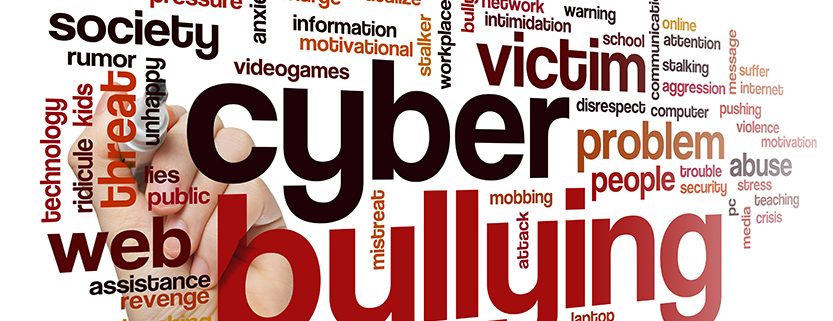From Cyberspace to the Workplace
Emerging technologies and the advent of social networking sites, add yet another dimension to workplace conflict in the form of cyber-bullying.
Unfortunately, cyber-bullying is not just something that affects our children and teenagers – adults are now being targeted by their work colleagues via email, text messaging, posts to blogs, and web sites.
Although cyber-bullying shares many similarities with more traditional methods of bullying, it has the potential to be more aggressive and can escalate a lot faster..
The dangerous formula of anonymity, a large audience, range of attack methods, lack of face-to-face communication and ability to contact the victim 24 hours a day, all contribute to the severity of cyber-bullying. It is important that employers recognise that addressing cyber-bullying is essential for creating a safe and productive working environment.
What is Cyber Bullying?
Cyber-bullying has been defined as “when the internet, mobile phones or other electronic devices are used to send or post text or images intended to hurt or embarrass another person”.
It can be as simple as continuing to send an e-mail to someone who has said they want no further contact with the sender; or posting gossip or rumours about a colleague on a social networking site, which can be shared instantly across the web to a large audience, inside and outside of your organisation. Rumours posted on the internet about someone can seriously affect their reputation and future career.
“When you post something on the internet, it’s not written in pencil mark, it’s written in permanent ink” … (The Social Network)
Cyber-bullying can also extend to more serious matters including threats, sexual remarks, ganging up on victims by making them the subject of ridicule in forums, and posting false statements as fact aimed at humiliation.
Other examples of cyber-bullying include:
- Prank phone calls, which may not only be annoying, but can turn to stalking if it persists;
- Electronic communications that feature offensive content such as explicit images or jokes/comments about ethnicity, religion or sexual preference;
- Fake e-mail accounts are very easy to set up, and allow the sender to anonymously send offensive or threatening emails;
- Fake profiles on social networking sites also have the same effect, and provide fertile ground for cyber bullies to post malicious or offensive messages etc;
- Sharing embarrassing, offensive or manipulated images or videos of a person;
- Screen savers or desktop backgrounds featuring offensive content;
- Text messages and forms of instant messaging are quicker than email, and permit users to have real time conversations and arguments, and can be abusive and threatening.
How can you protect your staff?
Remember, as an employer you have a duty of care to provide a safe workplace for your employees. Cyber-bullying is a real and growing problem in the workplace, and can have serious adverse affects on your staff and your organisation.
The most effective prevention is via education and clear policies and procedures. Ensure your existing bullying/harassment policy has a specific section on cyber-bullying which clearly illustrates what it is, how it occurs, how to address it, and the consequences for staff found to be involved in such behaviour. All staff must clearly understand that cyber-bullying will not be tolerated in your organisation.
Consider the following;
- Monitoring employee’s web browsing habits;
- Using a web security service which allows you to monitor and restrict which sites your employees visit or how long they spend on certain sites;
- Blocking access to social networking sites from work computers;
- Implementing effective policies and training regarding cyber-bullying, and acceptable uses of technology in your organisation;
- Remind staff of the pitfalls of posting information about themselves or others on the internet.
The Law
In October 2010, health and safety regulator Worksafe Victoria released new guidance materials on bullying in the workplace. In November 2010, the Victorian Law Reform Commission commenced a review of the adequacy of existing laws for dealing with the most serious cases of bullying. The Commission was due to deliver its final report to government by December 2011 however the reference was withdrawn following the introduction of the Crimes Amendment (Bullying) Bill 2011 which amends the existing offence of stalking, whilst also extending it to cover ‘serious bullying’
Given the increase of bullying in schools, in workplaces and online, there has been a greater concern about bullying coupled with a greater focus on trying to tackle it, particularly since the egregious bullying which occurred in the tragic Cafe Vamp involving young waitress Brodie Panlock, who committed suicide as a result of workplace bullying. The case illustrated graphically how victims of bullying can suffer significant and irreversible damage.
The new law has been dubbed Brodie’s law and was introduced in the Victorian State Parliament on 5 April 2011 and was enacted into law and commenced on 7 June 2011.
This increased concern over bullying has led to the introduction of the Crimes Amendment (Bullying) Bill 2011 (Vic) which broadens criminal law offences by extending existing laws dealing with stalking.
The new cyber-bullying legislation amends the Crimes Act 1958 (Vic) in relation to the criminal offence of stalking. The law relating to cyber-bullying has been extended so that it applies to all environments including workplaces. The legislation must commence operation by 1st January 2012 but may come into force earlier.
If you have any questions regarding Cyber Bullying in your workplace, please contact one of INVision’s Directors via this website.
References
http://www.ncpc.org/cyberbullying
http://www.cqrconsulting.com/disconnect/whitepapers/115-workplace-cyberbullying
http://cyberbullyinghelp.com/2010/11/22/cyberbullying-new-term-old-concepts/
http://www.articlesbase.com/management-articles/cyber-bullying-in-the-workplace-the-employers-responsibility-3715972.html



